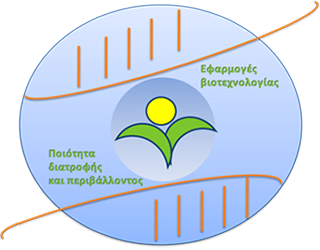Learning outcomes
The aim of the course is to provide students with the basic knowledge as well as the modern developments related to the fields of ‘Nutritional and Environmental Toxicology’. Thus, lectures of the course are related to the determination of the risk to humans from exposure to toxic compounds contained in products concerning food and the environment. Moreover, topics related to toxicity control and the procedures for approval of drugs and nutritional supplements by the EU and FDA are presented. Furthermore, the way of metabolism of toxic compounds found in food or the environment by the human body is presented. In addition, knowledge related to the use of insecticides and their effects on the environment is provided as well as methods for determining the ecotoxicity of compounds at the laboratory scale, mesocosm and open field. Finally, modern applications of biotechnology methods for the development of molecular markers used to determine the effect of toxic compounds on the environment are presented.
Outline of course content
- Process of determining risk exposure (risk assessment) to toxic compounds for the approval of products concerning nutrition and the environment.
- Toxicity control and procedures for approval of drugs and nutritional supplements by E.U. and FDA.
- Toxicity of plants, algae and fungi to humans through food.
- Toxicity of radiation and atmospheric pollution to humans.
- Bioterrorism toxins.
- General principles of metabolism of xenobiotic compounds.
- Phase I enzymes of xenobiotic compound metabolism.
- P450 enzyme system of phase I metabolism of xenobiotic compounds.
- Phase II enzymes of metabolism of xenobiotic compounds (glutathione transferases, glucuronyltransferases, thiotransferases).
- Examples of metabolism of xenobiotic compounds found in food and the environment.
- Use of insecticides and their toxic effects on the environment.
- Applications of biotechnology methods for the development of molecular markers used to determine the effect of toxic compounds in the environment.
- Basic concepts and definitions in ecotoxicology
- Acute and Chronic toxicity,
- EC50, LC50, NOEC(L), LOEC(L)
- Monitoring and Analysis Methods in Environmental Toxicology.
- Laboratory Single Species Tests and indicator organisms for aquatic and terrestrial ecosystems
- Species Sensitivity Distributions: theoretical background, construction and use in ecotoxicology, HC5
- Microcosms and Mesocosms in Ecotoxicology: Uses and Applications in Pesticide Toxicity Assessment, Construction and Application of Principal Response Curves
- Monitoring the ecological quality of natural ecosystems (Chemical vs Ecological quality), Microtox®
- Framework for evaluating the ecotoxicity of pesticides in the European Community (ecotoxicity tests, organisms – indicators, risk assessment)
